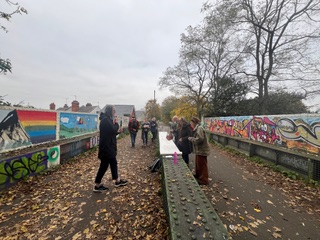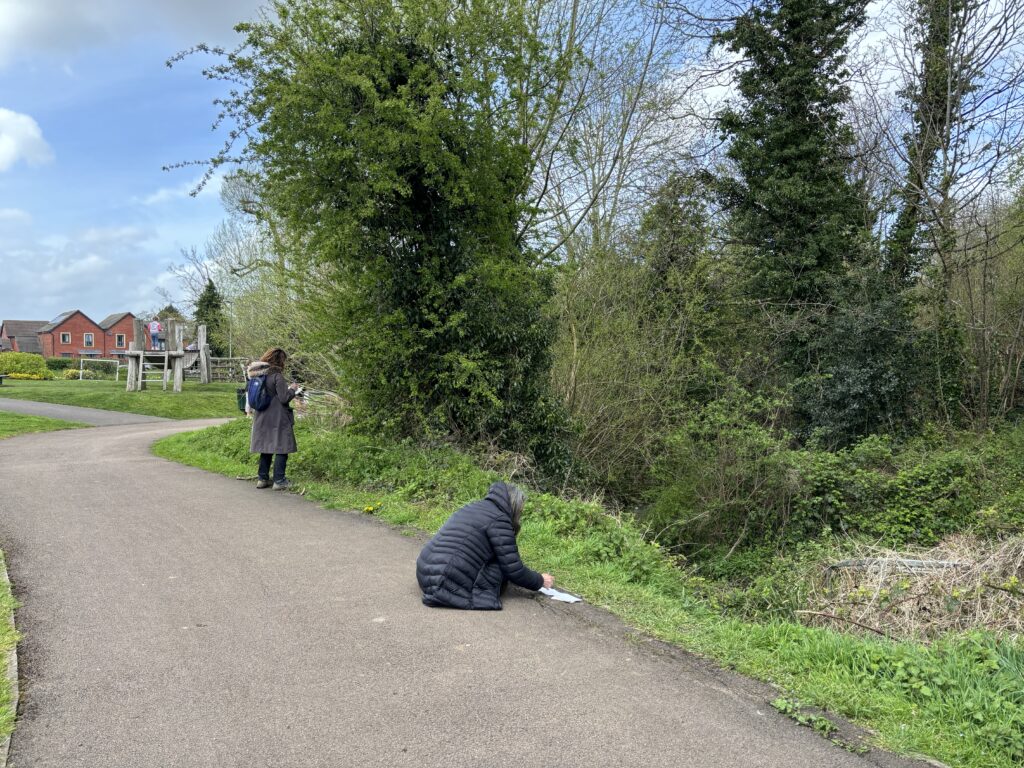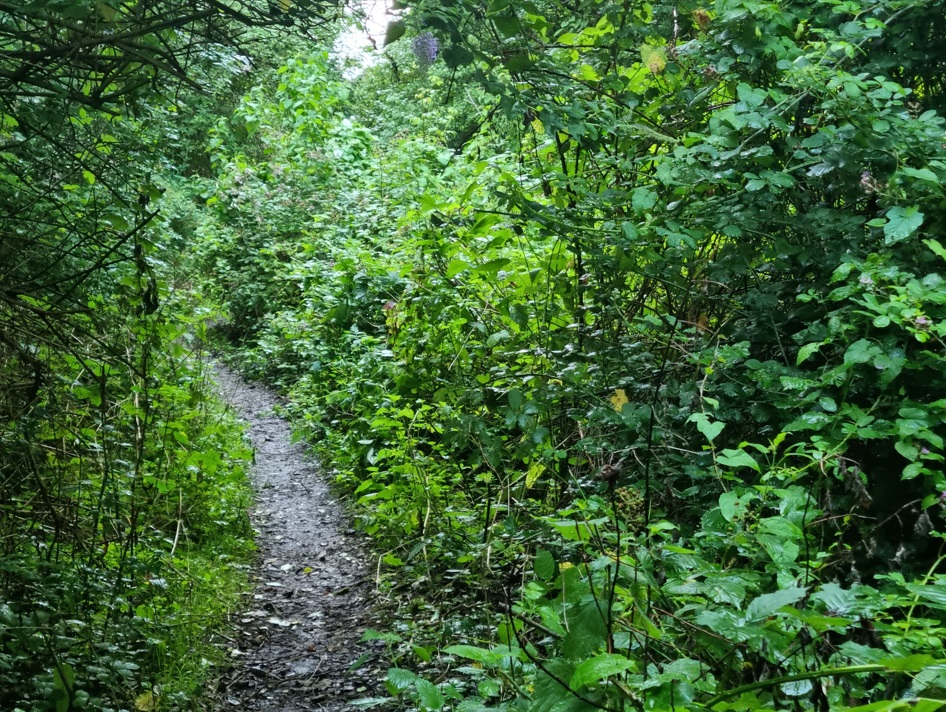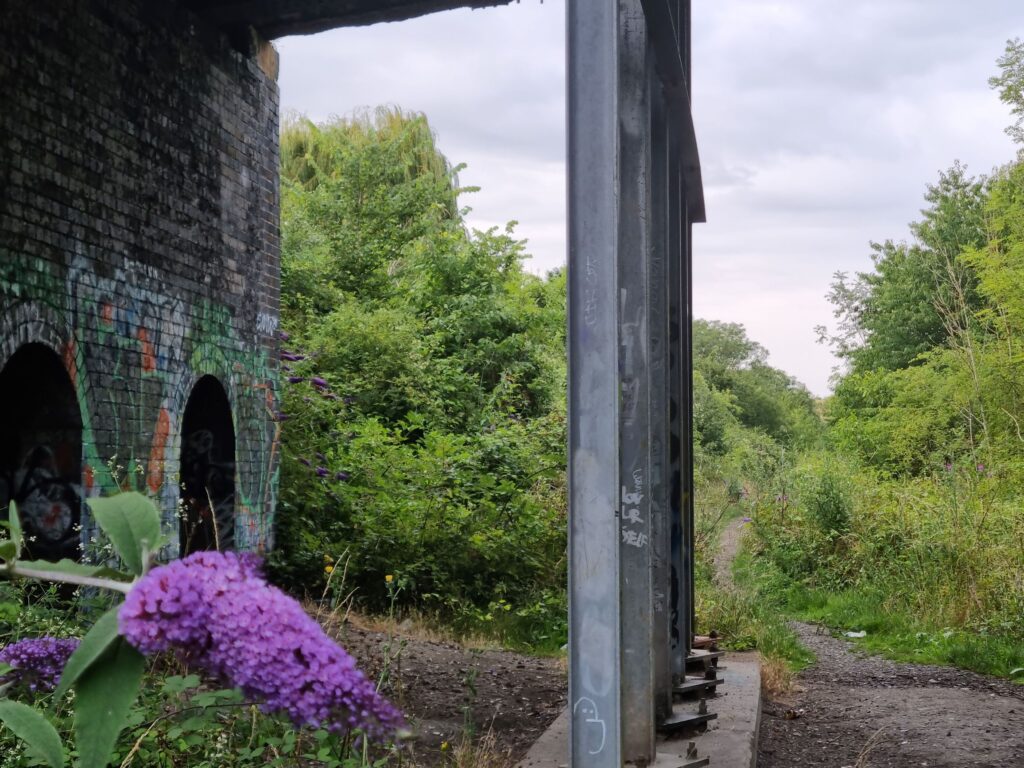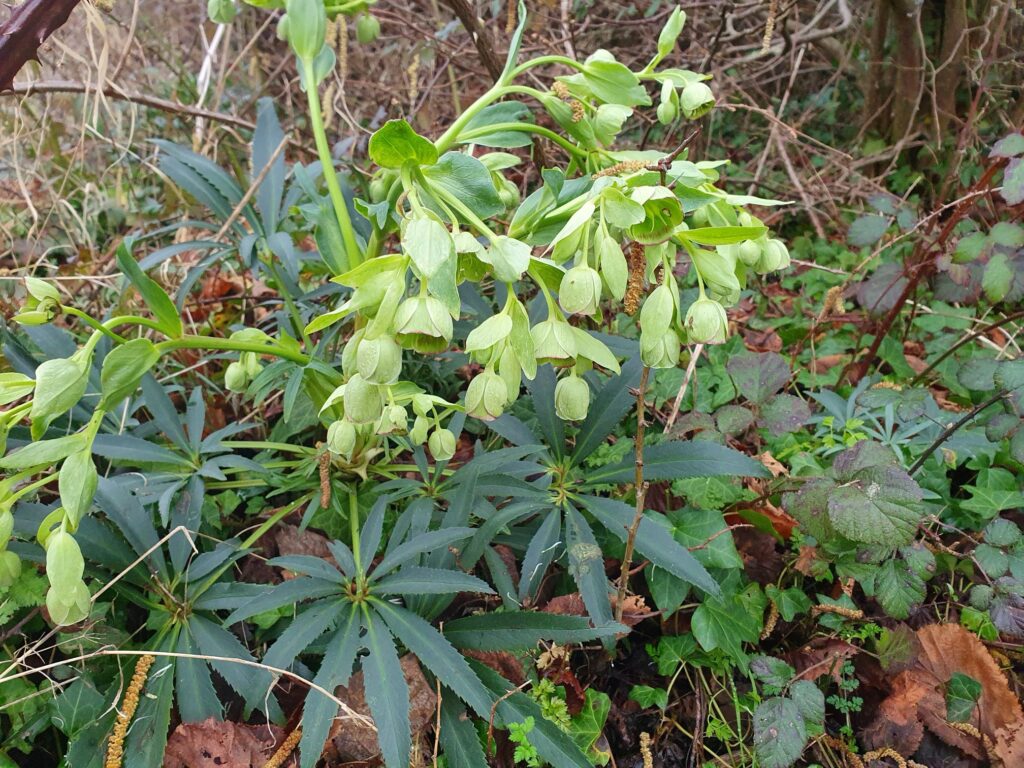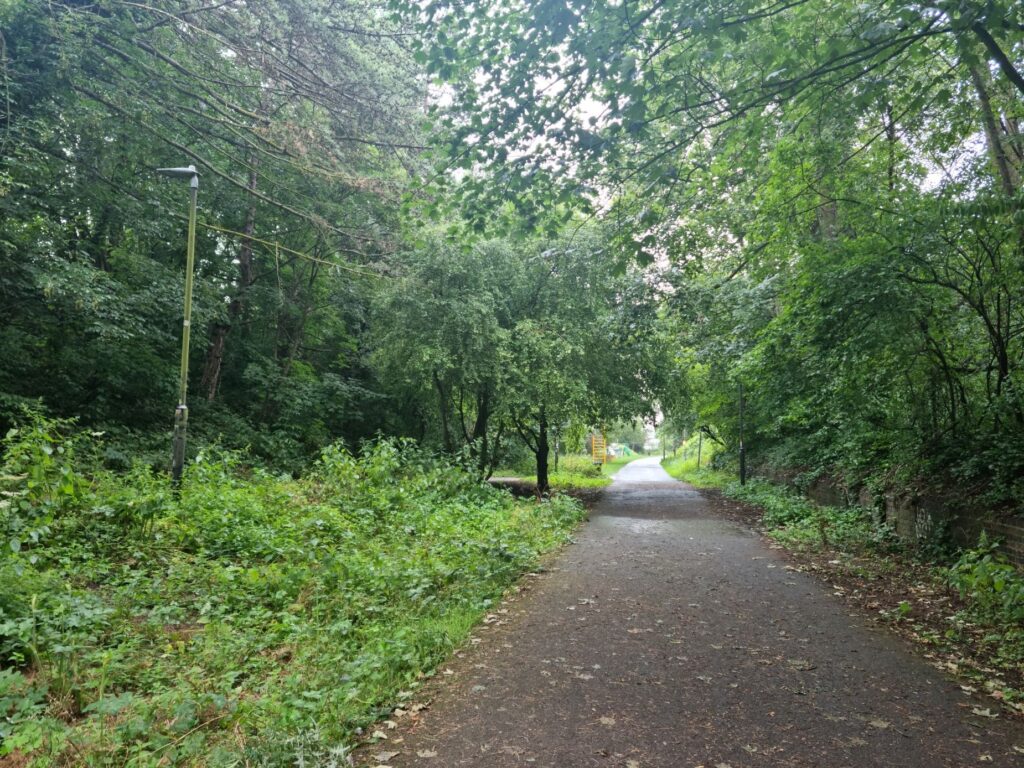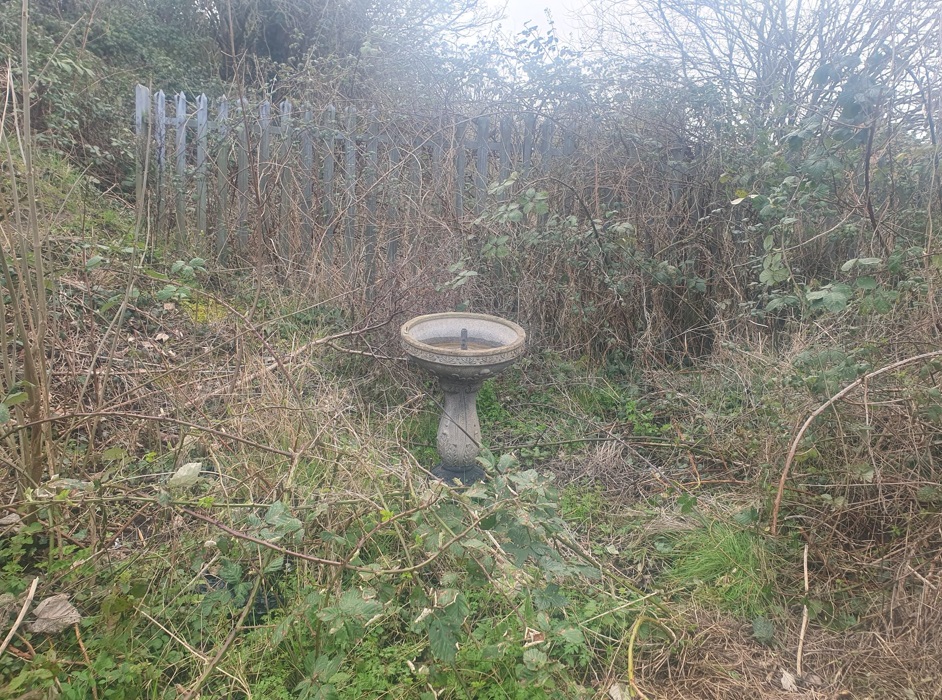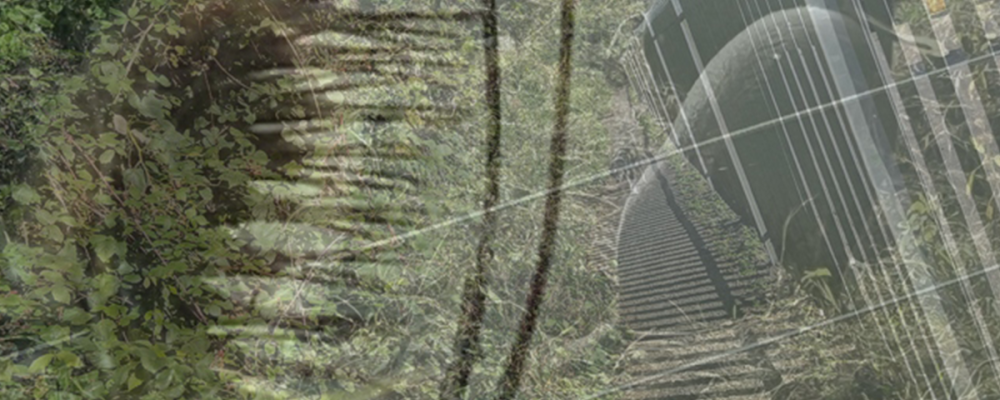
Line(s) of Enquiry was a collaborative project facilitated by Zoe Ashbrook, Richard Keating, Ruth Broadbent, Valerie Coffin Price of Walking the Land and Sarah Bowden Director of Hardwick Gallery (University of Gloucestershire).
Fourteen artists presented an exhibition of artwork, writing, research, and exploratory materials at Hardwick Gallery between 3rd March – 27th March 2025. Alongside the exhibition a community First Friday Walk and Private View were hosted on the 7th March and a symposium on Friday 21 March 2025 with invited guest speakers where walking plays a significant role within their practice. University of Gloucestershire researchers from the Fine Art department and CCRI (Countryside & Community Research Institute) presented their perspective on the project. Providing an opportunity to share more widely, and discuss in greater depth, outcomes from the project.
View or Download Exhibition Catalogue
About the Project
As a thought experiment, Line(s) of Enquiry allows us to consider these redundant railway lines as uncharted territory, to peel away what we know and reveal that which is made visible. The project can be understood as a ‘halt’ within the timeline of these lines, an opportunity to analyse the organisation of spatial, temporal and social fields of action at a particular point in their existence, specifically with art as the driver/producer of new knowledge, as a means to permeate the status quo, and develop spaces for critical engagement, affective encounter, and relational learning in the everyday.
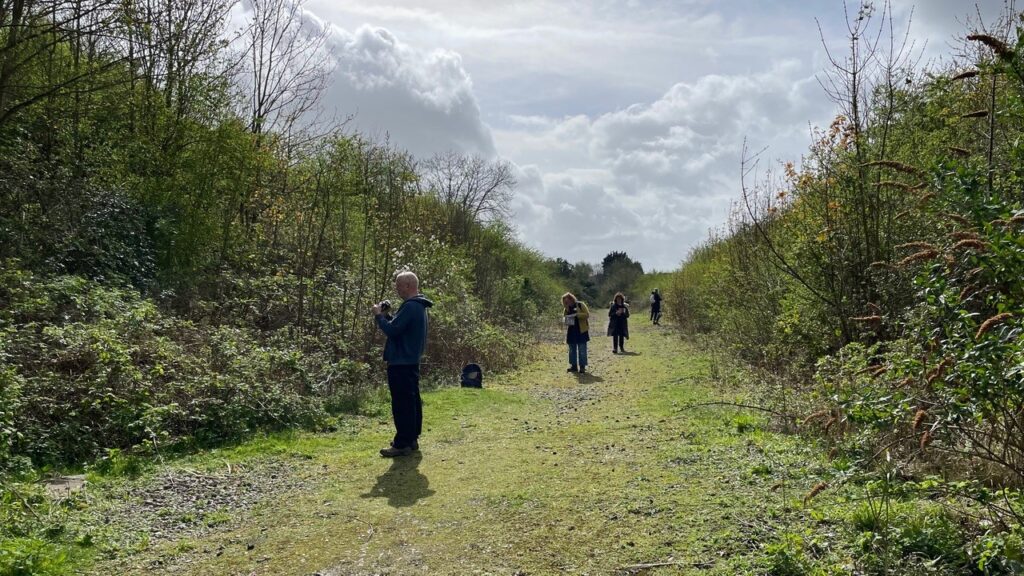
Between August 2023 and December 2024, fourteen Walking the Land artists engaged with Line(s) of Enquiry collectively through a series of shared seasonal First Friday Walks serving as research and stimulus for individual creative responses.
Image of Walking the Artists during a shared walk along the Honeybourne Line by Ruth Broadbent
By approaching each artist’s creative engagement as a layer in the mapping of the past, present and future of this (and other) public space(s), the project extended the collective imaginary of these reimagined lines in the landscape.
For artists living close to Cheltenham the Honeybourne Line, now a green corridor connecting communities in the north of Cheltenham, including Hardwick Campus, to the High Street and mainline station in the south, became the focus of the project. Artists living further afield in Stroud, Nailsworth, Cirencester, Oxfordshire, Cardiff, Somerset and Edinburgh, located and engaged with a linear route closer to home, in a form of linked study to bring another layer of research and contemplation to the project that also featured as part of the exhibition and symposium. The durational engagement enabled a sustained dialogue, encouraging those involved to look beyond the current use and purpose. Entwined with over a century of social history, traces of former life are abundantly evident and Line(s) of Enquiry enabled us to demonstrate the value of artistic research by looking beyond a track’s use and purpose to understand their ecologies: as topography, as habitat, as archive, as carrier of histories, as living museum, as network, as a place of movement, pause and transient encounters.
To contextualise the exhibition within a wider field of practices, Walking the Land and Hardwick Gallery coordinated a day-long symposium of discussions and workshops at the University of Gloucestershire (UoG). Following an introduction to the project by Zoe Ashbrook and Sarah Bowden, WtL artists Janette Kerr, Ruth Broadbent, Valerie Coffin Price and Amanda Steer shared their relationship to line, drawing and location. Jean Boyd, Demelza Jones, and Sarah Bowden approached the exhibition to discuss what the project initiates. After lunch attendees took part in a choice of group walking/drawing sessions led by guest panellists and WtL artists. The final discussion of the day was between Clare Qualmann, Richard Keating, and Paul Wakelam. Each gave a presentation sharing insight into their own practice before coming together to explore ideas around walking as a creative, collaborative practice.
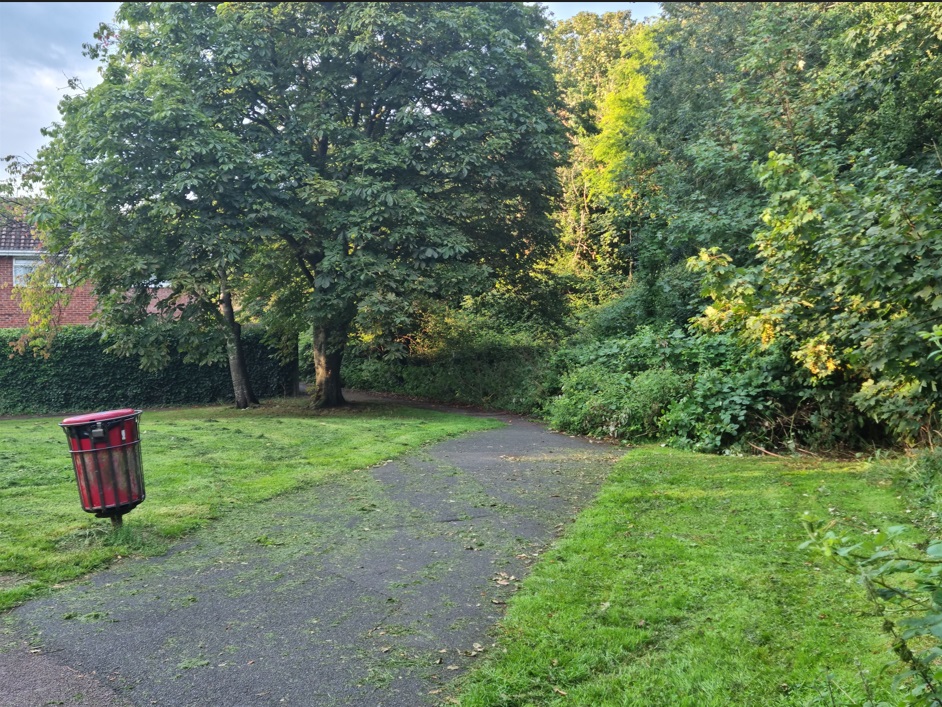
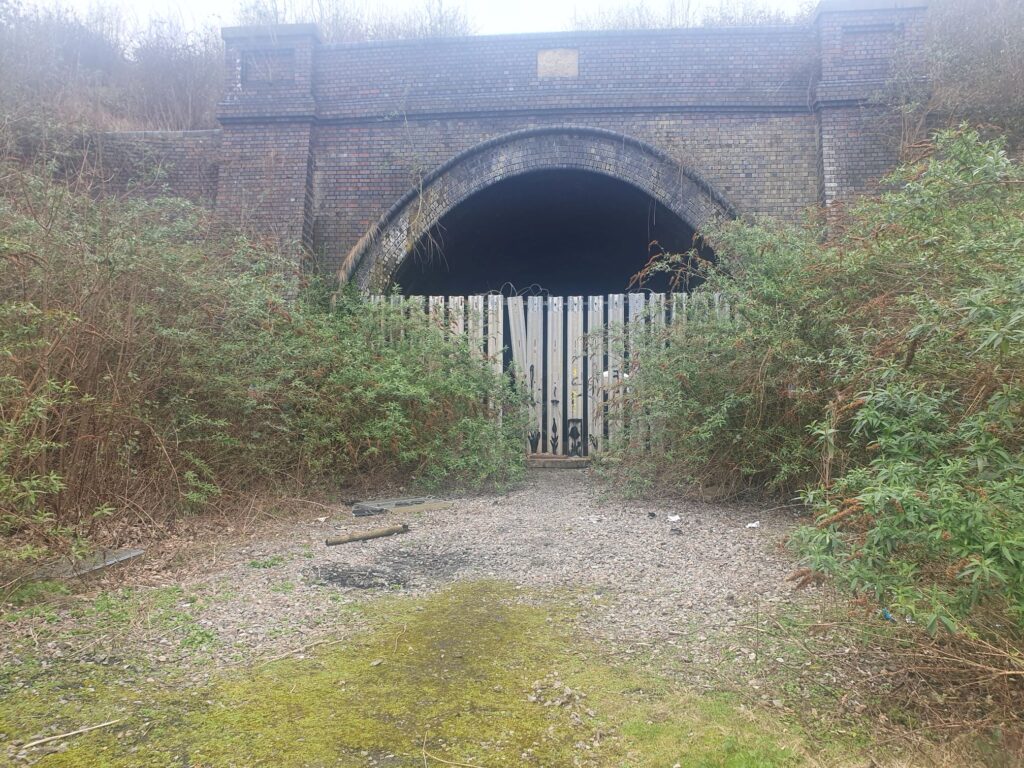
Image: Zoe Ashbrook
Artists
Zoe Ashbrook, Chris Bingle, Ruth Broadbent, Tamsin Grainger, Lucy Guenot, Ruth Illingworth, Richard Keating, Janette Kerr, Kate McMahon-Parkes , Caroline Morris, Valerie Coffin Price, Amanda Steer, Nik Taylor, Susie Walker.
